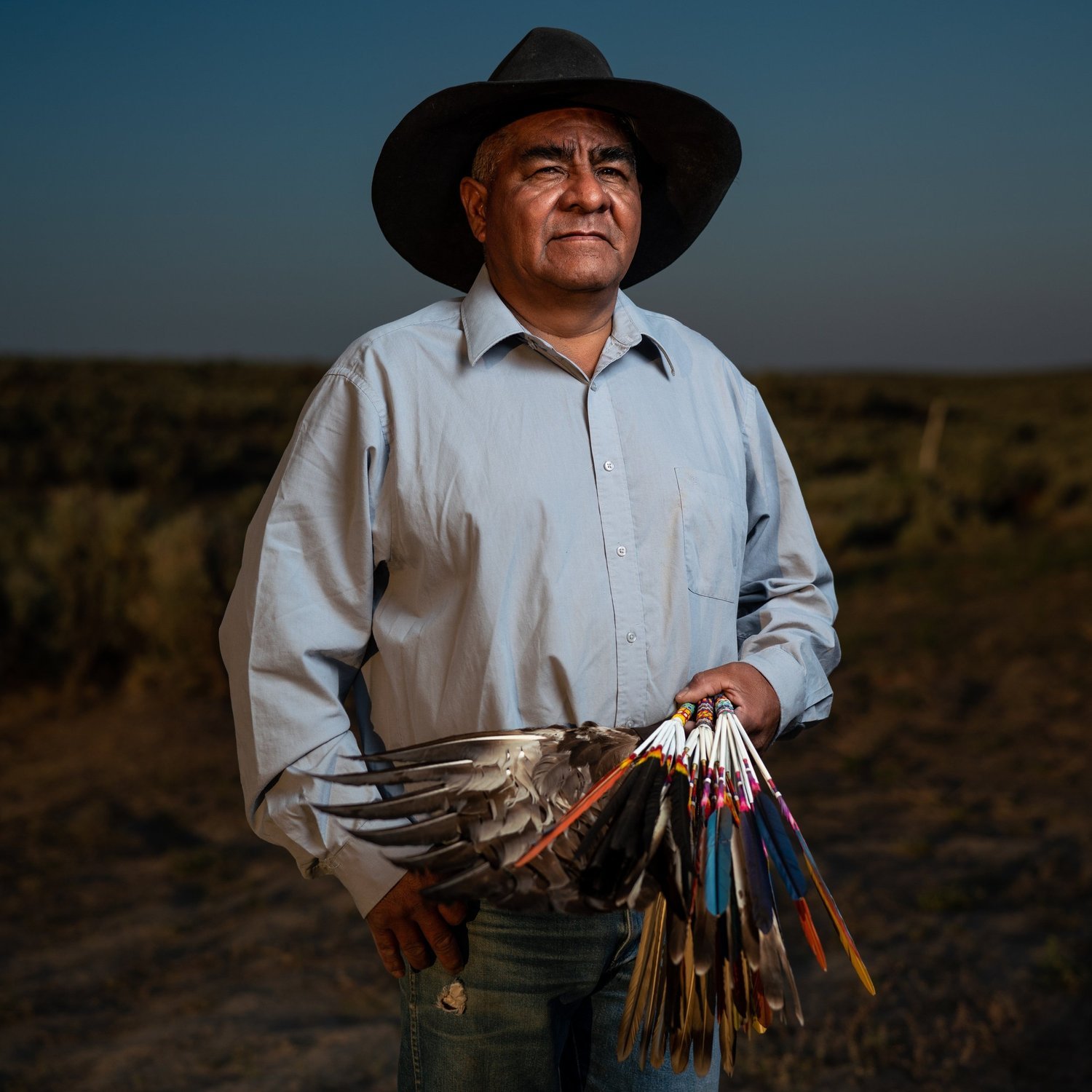Translation Through Art
By Len Necefer
Images by Tara Kerzhner
In 2021, NativesOutdoors partnered up with Visit Idaho to highlight Native artists within Idaho, whose work explores connections between land, culture, and generational knowledge.
Coeur D’Alene artist, Philomena Nomi. Photo by Tara Kerzhner.
Native artists are often translators of the natural world. They turn sensory elements—like sounds and color—into distinct pieces of art, and translate plant and animal life into tangible, physical representations. Their art is born out of a connection to nature and from skills that have been passed down for generations.
Most native artists source materials from the environment around them, tapping into knowledge grounded in both indigenous science and ceremonial traditions. These artists and their work provide a window into indigenous cultures and ecological knowledge that connects the people to the land, the past to the present and the present to the future. The vibrancy of native art speaks to the strength and resilience of cultural tradi- tions that pass from one generation to the next. There are ve sovereign Native Nations within the state of Idaho: the Shoshone-Bannock, the Nez Perce, the Shoshone-Paiute, the Coeur d’Alene and the Kootenai. Each of these groups represents a unique artisanal tradition that has been passed down since time immemorial.
The three artists featured here are knowledge keepers of artisanal traditions in their communities, and they represent three of the ve tribes of Idaho. These profiles provide a glimpse into the diverse artistry of these tribes, from a pair of elder artists to a younger artist following in their footsteps. As elders, Reggie Sope (Shoshone-Paiute) and Philomena Nomee (Coeur d’Alene) are community pillars and knowledge holders. They possess a breadth and depth of experience regarding the many different art forms that are critical to cultivating the next generation of artists and community members. In their roles as master artisans, Sope and Nomee are strong advocates for their communities, as well as mentors to the many young artists who follow their paths.
Shoshone-Bannock artist, Hunter Osborne. Photo by Tara Kerzhner
Hunter Osborne (Shoshone-Bannock) works in a traditional medium— roach making. Roaches are traditional headdresses worn by a number of tribes in North America for style, ceremony, and formal purposes. Osborne’s artistic practice grew out of his love for fancy dancing at powwows and is informed by his career as a biologist. While all three artists have different stories and are at different places on their journeys, each creates a bridge between past, present, and future through their work.
Coeur D’Alene Master Artist, Philomena Nomee. Photo by Tara Kezhner.
Coeur d’Alene Master Artist Philomena No- mee’s beadwork captures the vibrant colors and delicate shapes of the details in northern Idaho’s landscape—the flowers, grasses, birds, and contours of a summer sunset. On one of her dancing shawls, a beaded flower patch ambles across the buckskin like a bunch of wild lupines reaching toward the sun. Nomee’s beadwork provides a direct connection between the past, present and future of the Coeur d’Alene people and the cultural traditions that shape each of her masterfully executed designs.
Elder artists are the first to acknowledge the importance of their elders in educating them in their craft, now occupying a role that they once relied on for knowledge as young artists. Nomee is the daughter of Bill and Tillie Nomee and the granddaughter of Mary Massaslaw and Joseph Falcon. Nomee learned how to bead from her mother and has now been practicing the craft for nearly 60 years. She is also an accomplished cornhusk weaver, combing her skills to create powwow regalia and cradleboards and works with the Idaho Commission of the Arts as a Master Artist. Having taught fellow elders and children how to make traditional crafts, her passion and skill have inspired many to take up beadwork and cornhusk weaving.
Shoshone-Paiute artist, Reggie Sope. Photo by Tara Kerzhner.
As the sun crests the rolling hills surrounding Duck Valley, in the very southwestern portion of Idaho, its soft light illuminates the deep green fields of Reggie Sope’s ranch. Sope is a master of multiple mediums, who considers his artistic beginnings to be when his mother and grandmother taught him how to prepare and work with hides. He starts by unfurling a roll of smoked deer buckskin he had been saving to make a new pair of leather gloves, his laughter carrying across the valley as he reminisces about pestering his mother with questions when he was learning. He brings out a pair of gloves he previously made; the hide is perfectly intact smells and feels strong but soft. The simplicity of the gloves hides the many hours of work and skill needed to make them. Sope shows more examples of his mastery: a traditional infant cradleboard made from woven willows and antelope hide, intricately beaded feather fans, a traditional bow and arrows, ranching gloves and a beaded bag made without the use of a needle.
Sope is from the Shoshone-Paiute and the Pit River Paiute people, and he is a member of the Shoshone-Paiute Tribes of Duck Valley, where he lives today. He is deeply connected to the land where he lives and works each day as a rancher and a knowledge keeper. As a passionate and multi-skilled artist, Sope is committed to mentoring the next generation of Shoshone-Paiute artists, as well as passing on his unshakable connection to the land and cultural traditions of his people.




